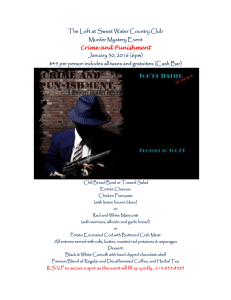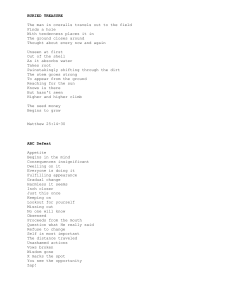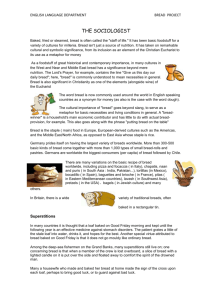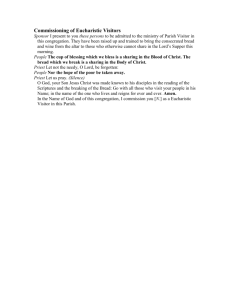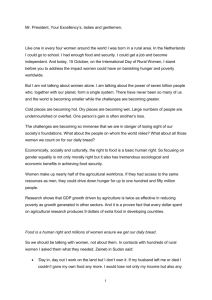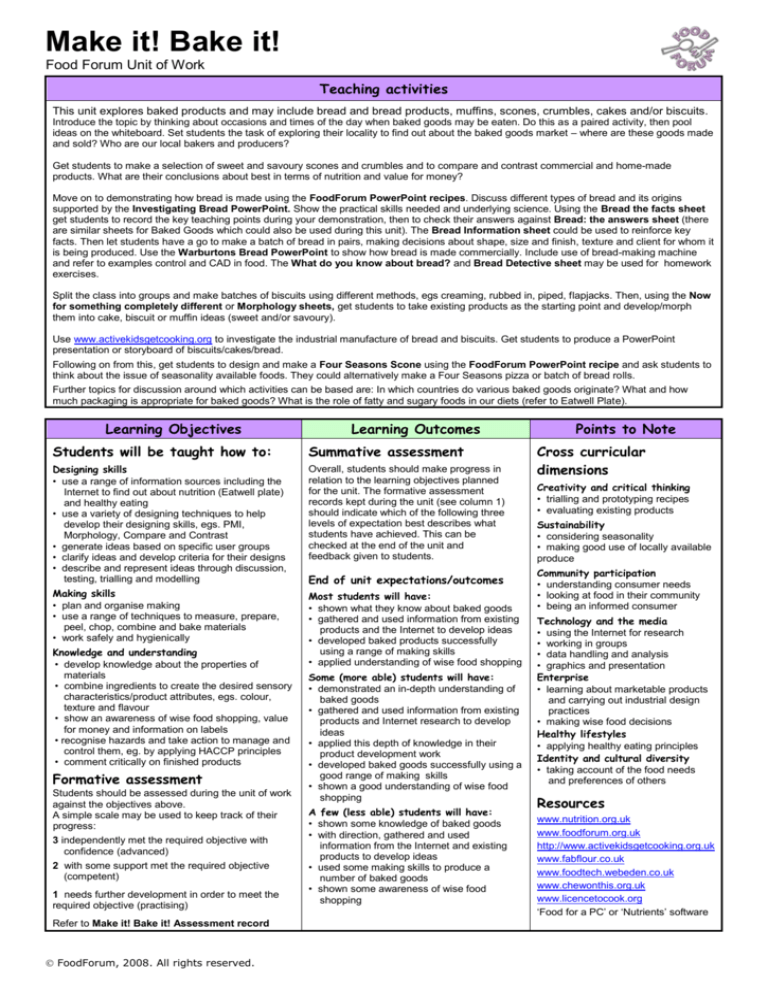
Make it! Bake it!
Food Forum Unit of Work
Teaching activities
This unit explores baked products and may include bread and bread products, muffins, scones, crumbles, cakes and/or biscuits.
Introduce the topic by thinking about occasions and times of the day when baked goods may be eaten. Do this as a paired activity, then pool
ideas on the whiteboard. Set students the task of exploring their locality to find out about the baked goods market – where are these goods made
and sold? Who are our local bakers and producers?
Get students to make a selection of sweet and savoury scones and crumbles and to compare and contrast commercial and home-made
products. What are their conclusions about best in terms of nutrition and value for money?
Move on to demonstrating how bread is made using the FoodForum PowerPoint recipes. Discuss different types of bread and its origins
supported by the Investigating Bread PowerPoint. Show the practical skills needed and underlying science. Using the Bread the facts sheet
get students to record the key teaching points during your demonstration, then to check their answers against Bread: the answers sheet (there
are similar sheets for Baked Goods which could also be used during this unit). The Bread Information sheet could be used to reinforce key
facts. Then let students have a go to make a batch of bread in pairs, making decisions about shape, size and finish, texture and client for whom it
is being produced. Use the Warburtons Bread PowerPoint to show how bread is made commercially. Include use of bread-making machine
and refer to examples control and CAD in food. The What do you know about bread? and Bread Detective sheet may be used for homework
exercises.
Split the class into groups and make batches of biscuits using different methods, egs creaming, rubbed in, piped, flapjacks. Then, using the Now
for something completely different or Morphology sheets, get students to take existing products as the starting point and develop/morph
them into cake, biscuit or muffin ideas (sweet and/or savoury).
Use www.activekidsgetcooking.org to investigate the industrial manufacture of bread and biscuits. Get students to produce a PowerPoint
presentation or storyboard of biscuits/cakes/bread.
Following on from this, get students to design and make a Four Seasons Scone using the FoodForum PowerPoint recipe and ask students to
think about the issue of seasonality available foods. They could alternatively make a Four Seasons pizza or batch of bread rolls.
Further topics for discussion around which activities can be based are: In which countries do various baked goods originate? What and how
much packaging is appropriate for baked goods? What is the role of fatty and sugary foods in our diets (refer to Eatwell Plate).
Learning Objectives
Learning Outcomes
Students will be taught how to:
Summative assessment
Designing skills
• use a range of information sources including the
Internet to find out about nutrition (Eatwell plate)
and healthy eating
• use a variety of designing techniques to help
develop their designing skills, egs. PMI,
Morphology, Compare and Contrast
• generate ideas based on specific user groups
• clarify ideas and develop criteria for their designs
• describe and represent ideas through discussion,
testing, trialling and modelling
Overall, students should make progress in
relation to the learning objectives planned
for the unit. The formative assessment
records kept during the unit (see column 1)
should indicate which of the following three
levels of expectation best describes what
students have achieved. This can be
checked at the end of the unit and
feedback given to students.
Making skills
• plan and organise making
• use a range of techniques to measure, prepare,
peel, chop, combine and bake materials
• work safely and hygienically
Most students will have:
• shown what they know about baked goods
• gathered and used information from existing
products and the Internet to develop ideas
• developed baked products successfully
using a range of making skills
• applied understanding of wise food shopping
Knowledge and understanding
• develop knowledge about the properties of
materials
• combine ingredients to create the desired sensory
characteristics/product attributes, egs. colour,
texture and flavour
• show an awareness of wise food shopping, value
for money and information on labels
• recognise hazards and take action to manage and
control them, eg. by applying HACCP principles
• comment critically on finished products
Formative assessment
Students should be assessed during the unit of work
against the objectives above.
A simple scale may be used to keep track of their
progress:
3 independently met the required objective with
confidence (advanced)
2 with some support met the required objective
(competent)
1 needs further development in order to meet the
required objective (practising)
Refer to Make it! Bake it! Assessment record
FoodForum, 2008. All rights reserved.
End of unit expectations/outcomes
Some (more able) students will have:
• demonstrated an in-depth understanding of
baked goods
• gathered and used information from existing
products and Internet research to develop
ideas
• applied this depth of knowledge in their
product development work
• developed baked goods successfully using a
good range of making skills
• shown a good understanding of wise food
shopping
A few (less able) students will have:
• shown some knowledge of baked goods
• with direction, gathered and used
information from the Internet and existing
products to develop ideas
• used some making skills to produce a
number of baked goods
• shown some awareness of wise food
shopping
Points to Note
Cross curricular
dimensions
Creativity and critical thinking
• trialling and prototyping recipes
• evaluating existing products
Sustainability
• considering seasonality
• making good use of locally available
produce
Community participation
• understanding consumer needs
• looking at food in their community
• being an informed consumer
Technology and the media
• using the Internet for research
• working in groups
• data handling and analysis
• graphics and presentation
Enterprise
• learning about marketable products
and carrying out industrial design
practices
• making wise food decisions
Healthy lifestyles
• applying healthy eating principles
Identity and cultural diversity
• taking account of the food needs
and preferences of others
Resources
www.nutrition.org.uk
www.foodforum.org.uk
http://www.activekidsgetcooking.org.uk
www.fabflour.co.uk
www.foodtech.webeden.co.uk
www.chewonthis.org.uk
www.licencetocook.org
‘Food for a PC’ or ‘Nutrients’ software

